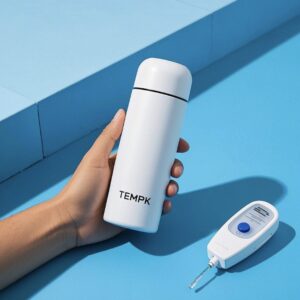Unveiling Insulin’s Properties and Temperature Sensitivity
As a critical protein-based substance, Insulin sangat sensitif terhadap fluktuasi suhu. Panas ekstrem atau dingin dapat mendenature molekul insulin, membuat mereka tidak efektif dalam mengatur gula darah. Sedangkan persyaratan penyimpanan sedikit berbeda antara jenis insulin, Mempertahankan rentang suhu yang tepat secara universal penting untuk menjaga kemanjuran terapeutiknya.
Key Points for Room Temperature Storage
Most insulin vials/basins require refrigeration before first use. Setelah dibuka, mereka biasanya dapat tetap stabil pada suhu kamar (≈25 ° C.) hingga 28 hari -hari, Padahal durasi ini bervariasi berdasarkan formulasi dan merek. Hindari Mengekspos Insulin Terbuka ke Suhu Melampaui 30 ° C atau Sinar Matahari Langsung, karena kondisi ini mempercepat degradasi protein.

Critical Refrigeration Guidelines
Unopened insulin must be stored between 2°C-8°C. Pembekuan (di bawah 0 ° C.) menyebabkan kerusakan struktural yang tidak dapat diubah, Sedangkan suhu di atas 8 ° C memulai kerusakan enzimatik. Selalu tempatkan wadah insulin di kompartemen utama kulkas, Menghindari kontak langsung dengan elemen beku.
Praktik terbaik untuk penyimpanan insulin
Managing Opened Insulin
Follow specific storage instructions provided in your insulin’s packaging insert. Store at room temperature away from heat sources, moisture, dan sinar matahari langsung. Discard immediately if you observe discoloration, particulates, atau keruh.
Proper Handling of Unopened Insulin
Maintain strict 2°C-8°C refrigeration. Ensure consistent temperature using a dedicated medical refrigerator. Never store insulin in freezer compartments or near cooling vents. Frozen insulin loses biological activity and should be discarded.

Portable Storage Solutions
Frequent travelers benefit from specialized insulin carriers:
- Portable Insulin Coolers: Vacuum-insulated designs maintain 2°C-8°C for up to 48 jam
- Smart Temperature Monitors: Bluetooth-enabled devices provide real-time temperature alerts
- Disposable Cool Packs: FDA-cleared options for short-term temperature stability
Common Storage Mistakes and Essential Precautions
Over-Refrigeration Risks
Freezing insulin (even briefly) causes permanent damage. Avoid storing in household freezers or deep-freeze compartments.
High-Temperature Hazards
Exposure to temperatures exceeding 40°C (MISALNYA., parked cars, sunlit windows) leads to rapid degradation. Use thermal storage bags when transporting in warm conditions.

Expiry Date Neglect
Check both expiration dates and in-use time limits:
- Unopened: Use by printed expiration date
- Opened: Khas 28 days post-first-use
- Exceptions: Some U-500 insulin vials last 42 hari -hari
Thermal Shock Avoidance
Sudden temperature changes (MISALNYA., transferring from fridge to hot environments and back) accelerate protein aggregation. Minimize exposure to extreme temperature differentials.
Innovations in Insulin Storage Technology
Adaptive Refrigeration Systems
Next-generation devices feature:
- Automatic temperature regulation (2°C-8°C range)
- Solar-powered charging capabilities
- Built-in USB ports for continuous temperature logging
IoT-Enabled Monitoring
Smart systems provide:
- Real-time temperature tracking via mobile apps
- Low-battery alerts
- Usage analytics for better medication management
The Critical Link Between Storage and Diabetes Management
Proper insulin storage directly impacts glycemic control outcomes. Studies show patients using temperature-monitored storage systems experience:
- 37% lower risk of hypoglycemic episodes
- 22% improvement in HbA1c levels
- 41% reduction in medication waste
Future Directions
Ongoing advancements focus on:
- Biodegradable insulin packaging
- Phase-change materials for extended temperature stability
- AI-driven predictive analytics for personalized storage recommendations
By adhering to these guidelines and leveraging innovative solutions, patients can ensure their insulin remains therapeutically viable in all environments. Proper storage not only safeguards treatment efficacy but also empowers individuals to lead active, healthy lives with diabetes management under control.
























